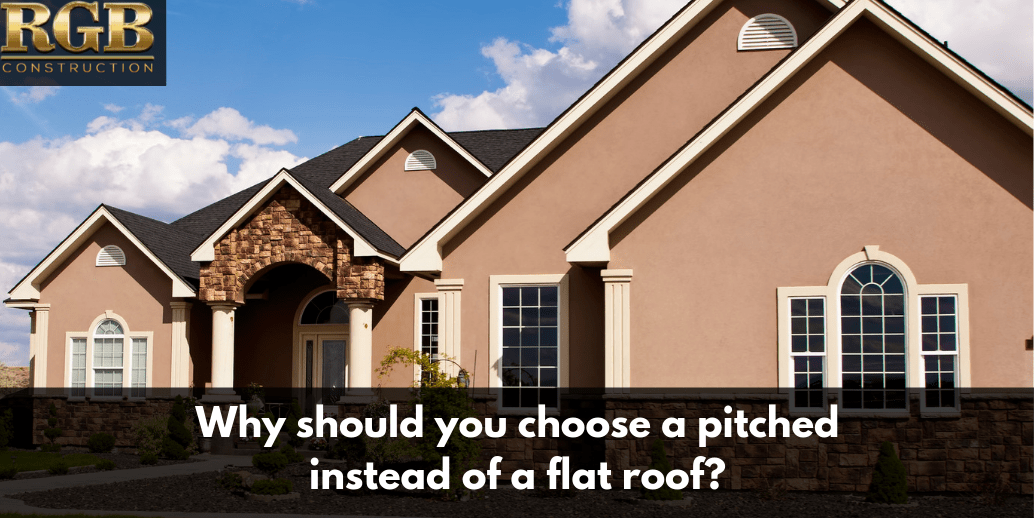A roofline can determine the look of a home much more than any other feature, and it impacts how a roof is going to protect a home from the elements and other factors. When dealing with the choice of a roofline, a homeowner should know the differences in roof lines and whether to choose a pitched roof over a flat roof. Here are some considerations for choosing a pitched roof.
Choosing a Pitched Roof Over a Flat Roof
Pitched roofs have advantages over flat roofs. For one thing, they are generally less costly to install than flat roofs, plus they are longer lasting. They are also a classic roofline that has remained firmly entrenched in modern design. Pitched roof designs and styles are versatile and can be easily modified to reflect new and imaginative design ideas. Not as much can be said for a roof that is flatter in nature, though they are easier to deal with in consistently dry climates. A flat roof does have an advantage when there are extensive overhangs, which does provide protection and allows for a more natural influx of light into the interior of a home.
Installation Costs
Pitched roofs don’t require the kind of costly membrane system installations that flat roofs do, as the use of shingles with pitched roofs are considerably less involved in relation to installation costs. A pitched roof also sheds water well, particularly if it is not too steep, and has a pitch anywhere between five and twelve. Any greater of a pitch will be more difficult to walk on, maintain and service; whereas a flat roof doesn’t shed water well and can eventually experience problems with leaks and other water damage. In addition, installation, repair, and maintenance are going to be costly, plus this type of roof will likely have limited years of service.
Other Advantages of Pitched Roofs
From the point of structural aspects and various components used, the initial investment with a pitched roof choice is considerably less than that of a flat roof. Other advantages of a pitched roof include:
- Reduction in carbon dioxide emissions
- Addition of more space
- Limited maintenance
- Reduced costs of production
- Durability and reusability of various roof essentials
- Lower lifespan costs over a greater number of years
- Possible renovation after 30 years
- Increased thermal efficiency
- Maximum comfort in cold and hot seasons
- Excellent noise absorption due to use of materials that draw in sound
- Faster water elimination or drain away from a structure
- Able to endure weather extremes and heavy hail and snow buildup
- More wind and storm resistant
- Additional installations of solar or other energy saving materials are easily adapted to a pitched roof surface
It’s important to realize the benefits of a pitched roof. The deciding factors with such a roof should be made in consideration to the style that best fits the local area or region and the climate. It’s also important to weigh the benefits and drawbacks of any roof line. If you aren’t sure what best fits your needs, complete the online contact form and a roofing expert will get back to you with the best choices for your situation. Whether pitched or flat, there is a right roof line for you and your home.







